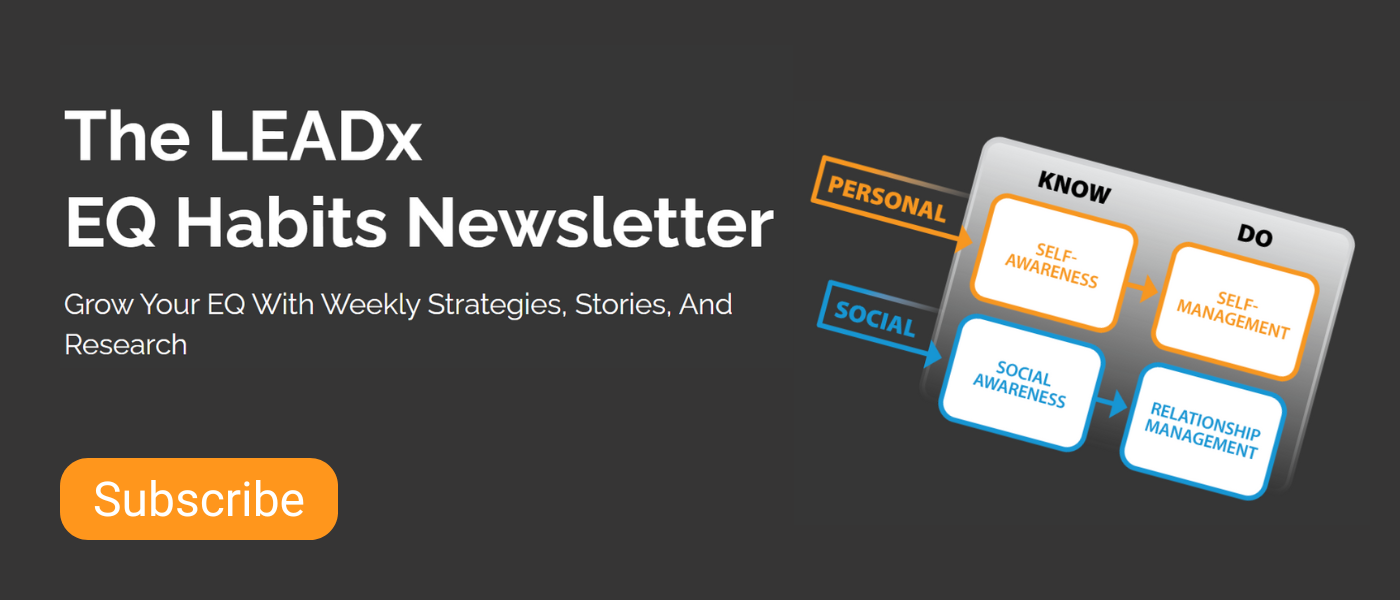
Self-doubt is like an invasive vine: It creeps in subtly and, if left unchecked, entangles every branch of your life. Short term, self-doubt destroys focus and productivity, stifles creativity, holds you back from setting audacious goals, and feels downright terrible. Long term, it can grow into bigger issues, like perfectionism, imposter syndrome, and self-handicapping.
 But here’s the good news: Self-doubt has been around for as long as we have, and many have found ways not just to overcome it but to harness it. What follows are three unexpectedly effective strategies based on real-world examples to help transform your self-doubt from a hindrance to an opportunity.
But here’s the good news: Self-doubt has been around for as long as we have, and many have found ways not just to overcome it but to harness it. What follows are three unexpectedly effective strategies based on real-world examples to help transform your self-doubt from a hindrance to an opportunity.
1. Embrace Risk: Commit to ‘Targeted Recklessness’
Recklessness is often viewed negatively, but when harnessed deliberately, it can be a potent antidote to self-doubt.
Consider Artist Marina Abramović, renowned for her wild and daring performance art. She has equipped her audience with scissors and let them cut up her clothes and her hair. She sat completely still in one position for eight hours per day for 16 days straight. In a third piece, she spent an hour running and colliding with her partner over and over until the audience screamed at them to stop. These examples are just the tip of the iceberg, the tamer work-friendly list.
Based on the boldness of Abramović’s art, you might expect her to be fearless, wired differently from the rest of us. But the opposite is actually true. “I was brave in my art, but the truth was (and still is) that I went through hell before every one of my performances. Sheer terror. I would go to the bathroom twenty times,” she explained in her memoir. To conquer her fear, Abramović threw herself into her work. “The moment I stepped into the work, it was something else entirely…when it comes to my work, I cast caution to the winds,” she said.
Abramović weighs her self-doubt against her passion for her art, and her art wins. You can apply this tactic to anything—whether you’re stretching yourself at work or stepping into a room full of strangers to network. Often, you’ll find that what you stand to gain far outweighs the temporary discomfort of fear.
2. Seek Out People and Spaces Where You Feel Free
Do you ever get the feeling that you’re performing, even when you’re with your friends? This feeling is a form of self-doubt and one of the most insidious forms. This “social self-doubt,” or self-consciousness, comes from the nagging feeling that you must hide your true self to meet the expectations of others and come across as “likable.”
Author Zadie Smith captures this sentiment perfectly: “Much of life can feel like a performance, where you’re trying to fit in, impress, or meet expectations. Even close friendships sometimes have this performative aspect where you’re not fully yourself.” Living in this state of constant performance is exhausting and can burn you out.
Smith’s solution to this problem is simple in concept but challenging in practice: Seek out spaces where you don’t feel that pressure. “Anywhere you can go where you’re not on stage, where you’re not having to keep up someone else’s idea of you, where you can just be yourself—that is freedom,” she says.
Everyone knows the importance of this feeling of freedom, but many of us fail to seek it out and make it a regular part of our lives. In the same way, we consider brushing your teeth to be sound mouth hygiene, we should learn to consider the time you spend in empowering settings to be a form of hygiene for well-being.
3. Cultivate a Mindset of Bold Experimentation
There’s a saying that the antidote to anxiety is action. The same can be said for self-doubt. Sometimes, the best way to overcome self-doubt is to bury yourself in the very thing that’s causing it. Instead of shying away, dive deeper.
Consider an example from novelist Karl Ove Knausgaard, one of the most prolific writers of our era. With 16 literary books to his name and a writing pace of one book per year, you’d imagine him to be full of confidence. Yet when an interviewer asked Knausgaard about his productivity, he mostly expressed self-doubt. “I think [my work] is boring,” he admitted. “I’m full of doubt always.”
To combat these feelings, Knausgaard employed a simple strategy. He embraced a mindset of experimentation and curiosity. “I think of [this series of books] as an experiment to write an enormous amount of books very quickly,” he said. “There was this feeling that I shouldn’t do it. That this [approach] was forbidden. But it was the [attitude] of [to heck with] it, I’m gonna do it for myself.” By committing to an experimental mindset, Knausgaard shifted his energy and focus away from self-doubt and toward creative exploration. Similar to Abramovic in strategy one, it’s as if Knausgaard’s intense commitment cancels out his self-doubt.
Putting These Insights Into Action
If seasoned masters like Abramović, Knausgaard, and Zadie Smith all feel self-doubt, it’s safe to say that you can’t just “get rid of it.” What you can do is learn from and imitate those who have figured out how to overcome it and even use it to their advantage. After all, this ability to make good use of “bad” emotions is the ultimate sign of emotional intelligence.






